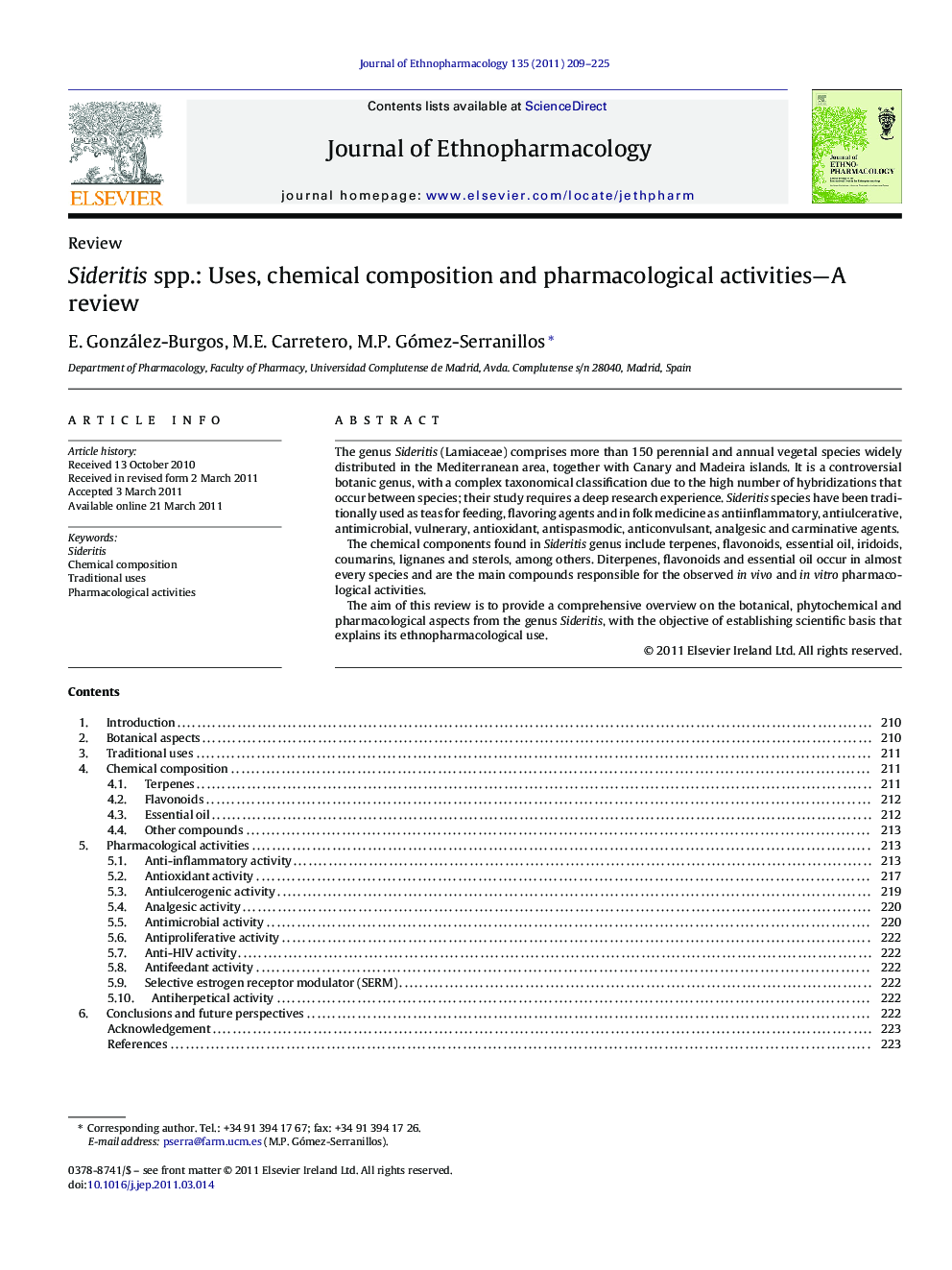| Article ID | Journal | Published Year | Pages | File Type |
|---|---|---|---|---|
| 5839727 | Journal of Ethnopharmacology | 2011 | 17 Pages |
The genus Sideritis (Lamiaceae) comprises more than 150 perennial and annual vegetal species widely distributed in the Mediterranean area, together with Canary and Madeira islands. It is a controversial botanic genus, with a complex taxonomical classification due to the high number of hybridizations that occur between species; their study requires a deep research experience. Sideritis species have been traditionally used as teas for feeding, flavoring agents and in folk medicine as antiinflammatory, antiulcerative, antimicrobial, vulnerary, antioxidant, antispasmodic, anticonvulsant, analgesic and carminative agents.The chemical components found in Sideritis genus include terpenes, flavonoids, essential oil, iridoids, coumarins, lignanes and sterols, among others. Diterpenes, flavonoids and essential oil occur in almost every species and are the main compounds responsible for the observed in vivo and in vitro pharmacological activities.The aim of this review is to provide a comprehensive overview on the botanical, phytochemical and pharmacological aspects from the genus Sideritis, with the objective of establishing scientific basis that explains its ethnopharmacological use.
Graphical abstractSideritis spp. have been traditionally used in Mediterranean area as teas, flavoring agents and for therapeutical purposes because of its anti-inflammatory, digestive, antioxidant and vulnerary properties. This review includes the following topics: botanical aspects, traditional uses, chemical composition and pharmacological activities as well as future perspectives in research are provided.Download high-res image (260KB)Download full-size image
